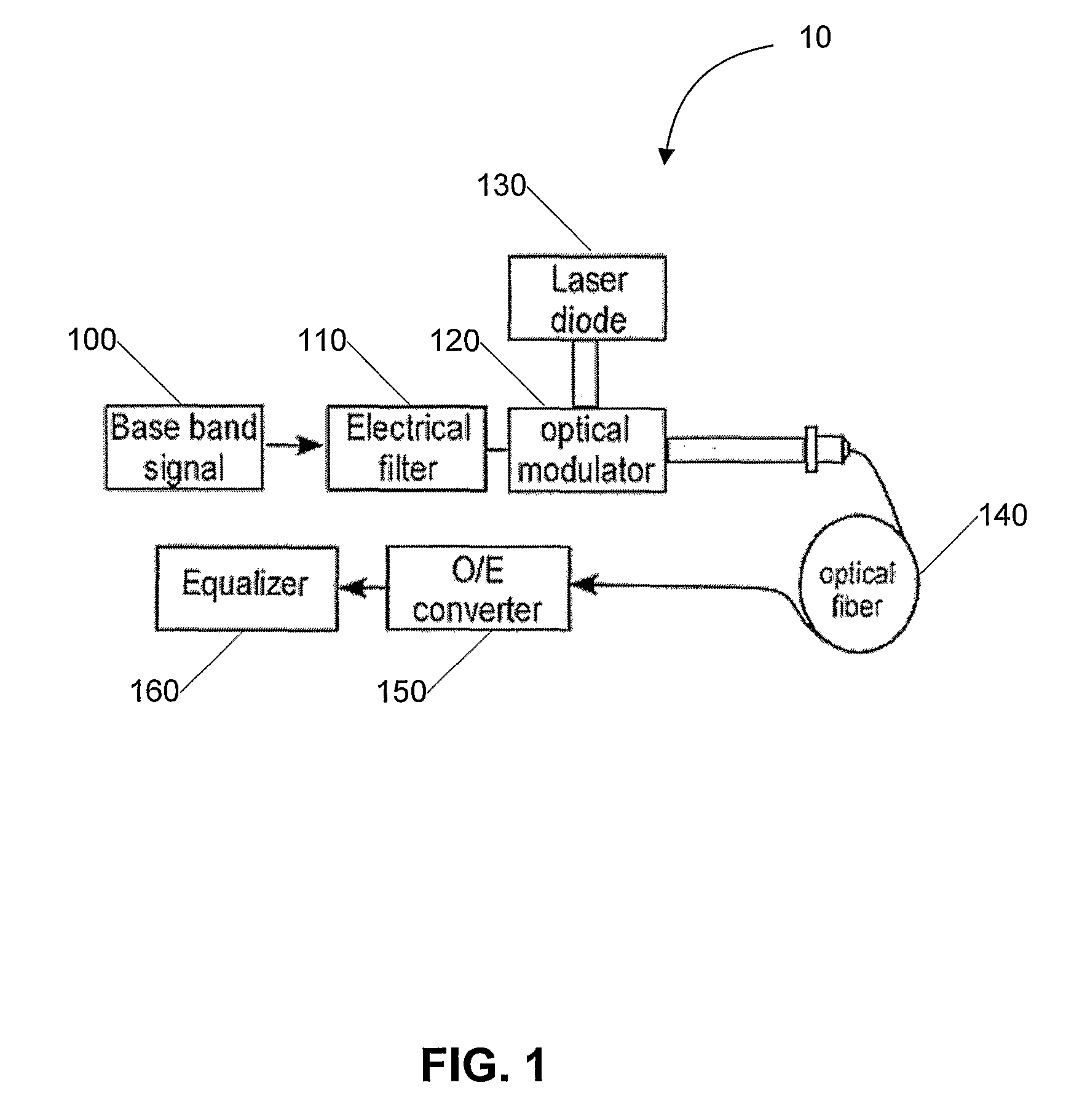System and Method For Increasing Spectral Efficiency, Capacity and/or Dispersion-Limited Reach of Modulated Signals in Communication Links
a communication link and capacity-limited technology, applied in electromagnetic transmission, electrical equipment, transmission, etc., can solve the problems of limiting the fiber capacity, pulse broadening and intersymbol interference, modulation format increasing the distance reach, etc., to improve the spectral efficiency and dispersion-limited reach of the communication link, reduce the bandwidth of the signal, and increase the spectral efficiency
- Summary
- Abstract
- Description
- Claims
- Application Information
AI Technical Summary
Benefits of technology
Problems solved by technology
Method used
Image
Examples
Embodiment Construction
[0027]The following detailed description utilizes a number of acronyms which are generally well known in the art. While definitions are typically provided with the first instance of each acronym, for convenience, Table 1 below provides a list of the acronyms and abbreviations used herein along with their respective definitions.
TABLE 1ACRONYMDEFINITIONBERBit error rateDPSKDifferential phase shift keyingDSPDigital signal processorEDCElectronic dispersion compensationFDMFrequency division multiplexingFIRFinite input responseISIIntersymbol interferenceMLSEMaximum likelihood sequence estimate equalizerMUXMultiplexerNF-OOKNarrowly filtered on-off keyingNRZ-OOKNon-return to zero on-off keyingO / EOptical to electrical signal converterOOKOn-Off keyingOSAOptical spectrum analyzerOSNROptical signal to noise ratioPMDPolarization mode dispersionPSKPhase shift keyingQPSKQuadrature phase shift keyingRFRadio frequencyRZ-OOKReturn to zero on-off keyingSMFSingle mode fiberTDMTime division multiplexing...
PUM
 Login to View More
Login to View More Abstract
Description
Claims
Application Information
 Login to View More
Login to View More - R&D
- Intellectual Property
- Life Sciences
- Materials
- Tech Scout
- Unparalleled Data Quality
- Higher Quality Content
- 60% Fewer Hallucinations
Browse by: Latest US Patents, China's latest patents, Technical Efficacy Thesaurus, Application Domain, Technology Topic, Popular Technical Reports.
© 2025 PatSnap. All rights reserved.Legal|Privacy policy|Modern Slavery Act Transparency Statement|Sitemap|About US| Contact US: help@patsnap.com



